Discover the enchanting Bay Mau Coconut Forest in Hoi An, a serene escape from the bustling city. This article reveals 7 essential things you need to know before exploring this lush green paradise.
From its rich biodiversity to the engaging activities available, get ready to immerse yourself in the tranquility of nature and create unforgettable memories in this hidden gem of Vietnam.
List of Contents
1. Overview of Bay Mau Coconut Forest
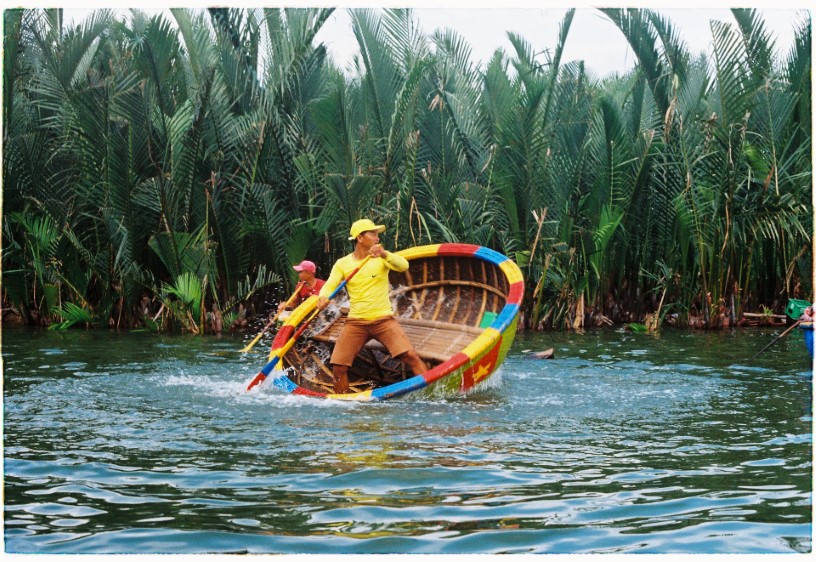
Located in the heart of Quang Nam Province, Bay Mau Coconut Forest is a renowned eco-tourism destination that attracts visitors from around the world.
This lush, green paradise offers a peaceful retreat from the bustling streets of Hoi An and provides a unique opportunity to explore Vietnam’s natural beauty.
The significance of eco-tourism in Hoi An cannot be overstated, as it plays a crucial role in preserving the environment and supporting the local community.
2. History of Bay Mau Coconut Forest
The Bay Mau Coconut Forest has roots deep in time. For 200 years, this tropical grove has stood tall. Mekong Delta settlers planted it. Rich soil and plentiful water helped it thrive.
From seven hectares, the verdant sanctuary grew. Now it covers 100 hectares. This growth shows the strength of coconut palms and local care.
During war, the leafy refuge became a hideout. Its thick canopy sheltered fighters. The green fortress gave Vietnam an edge in battle.
Today, visitors walk where history was made. The lush paradise tells a story of growth and struggle. In its shade, one feels the weight of Vietnam's past.
3. Location and Accessibility
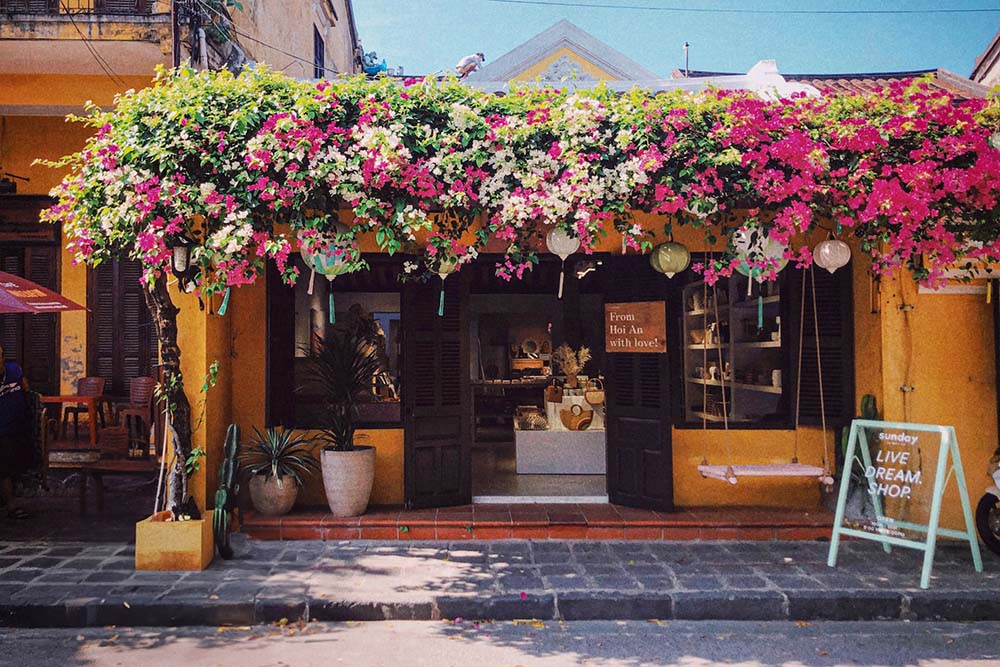
The Bay Mau Coconut Forest is conveniently located at Group 2, Can Nhan Hamlet, Cam Thanh Commune, Hoi An City, Quang Nam Province. Just 3 to 5 kilometers from the Hoi An city center, it is easily accessible by various means of transportation.
- Address: Group 2, Can Nhan Hamlet, Cam Thanh Commune, Hoi An City, Quang Nam Province
- Distance: 3-5 km from Hoi An city center
- Operating Hours: 7:00 AM – 5:00 PM
- Entrance Fees: 30,000 VND per person
- Boat Rental Costs: 150,000 VND – 200,000 VND per boat
4. Best Time to Visit Bay Mau Coconut Forest
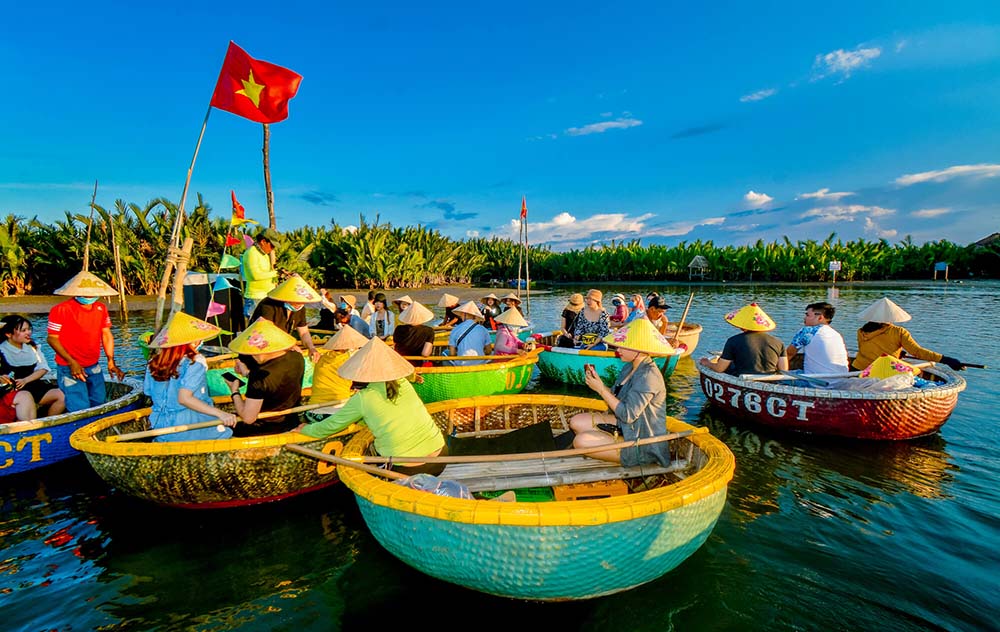
The best time to explore Bay Mau Coconut Forest is February to September. These dry months offer sunny skies and mild weather. Perfect for wandering the green sanctuary.
- Prime Months: February to September
- Clear days and comfortable temps make eco-tours a joy. The lush grove shines under blue skies.
- Peak Beauty: August and September
- In late summer, the tropical oasis glows. Coconut palms bloom. The air fills with the scent of salted sesame coconut rice.
- Weather Watch:
- October and November bring rain. Floods may block paths in the verdant refuge. Check forecasts if visiting then.
5. How to Get to Bay Mau Coconut Forest
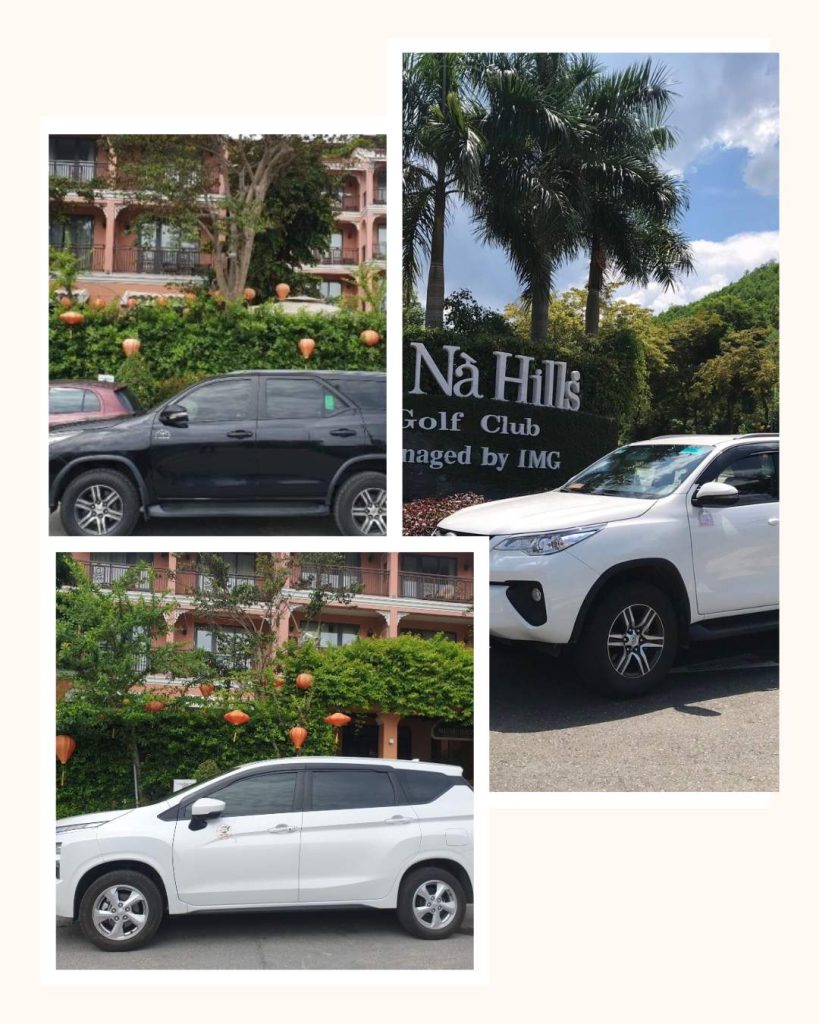
You have two routes to reach Bay Mau Coconut Forest:
- River route: The fastest water route follows Hoi An market. To reach Bay Mau Coconut Forest, you must go to the boat dock on Bach Dang River.
- Land route: From Tran Phu Street, turn onto Nguyen Duy Street, then turn right onto Tran Nhan Tong Street to reach Bay Mau Coconut Forest.
If you're touring the Old Town, you'll have more transportation options, such as bicycles, cyclos, or walking. However, to enter the coconut forest, the only available mode of transport is the basket boat. Basket boats are an excellent way to admire and explore the wonders slowly.
One such basket can carry up to 4 people. There are also baskets that can only carry 2 people, depending on your choice. Additionally, there are sampans and motorboats available, but most people still prefer the basket boats.
6. Key Attractions and Activities
6.1 Basket Boat Ride
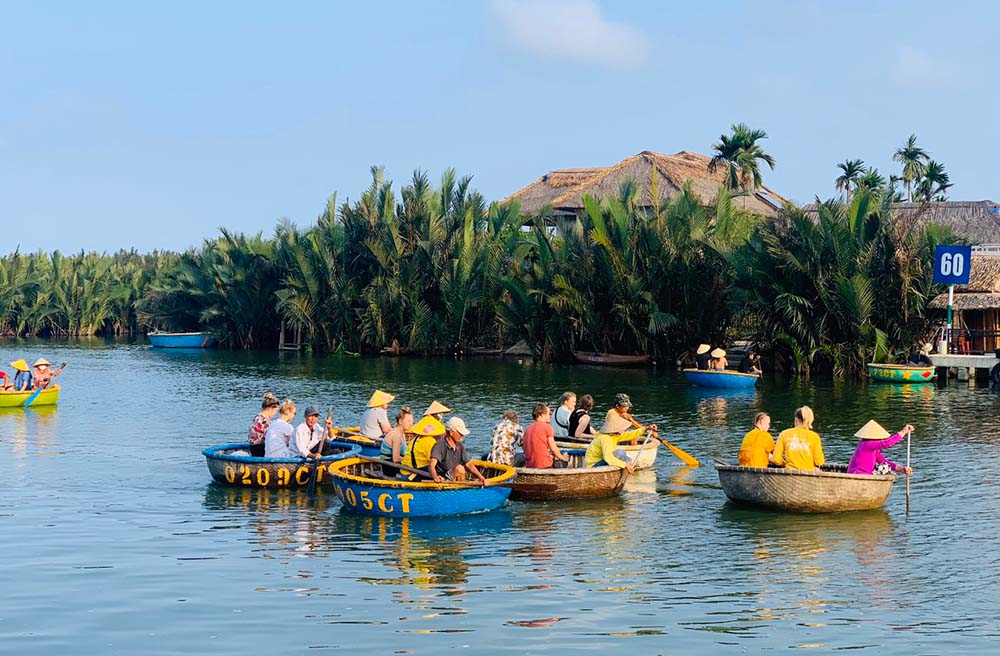
One of the most iconic experiences at Bay Mau Coconut Forest is the basket boat ride. Visitors can enjoy a unique journey through the dense coconut groves in traditional round boats, guided by skilled local boatmen.
- Types of Boats Available: There are two types of basket boats available – small boats with a capacity for 2 people and larger ones that can accommodate 4 people.
- Scenic Views and Storytelling: As you glide through the tranquil waters, the boatmen share fascinating stories about the forest’s history and the local way of life, all while you enjoy the picturesque surroundings.
6.2 Traditional Boat Performances and Races
The traditional boat performances and races are a highlight at Bay Mau Coconut Forest. These events showcase the incredible skills and techniques of the local boatmen.
- Overview of the Performances: Visitors can witness impressive displays of balance and agility as the boatmen perform dances and races on the water.
- Skills and Techniques Displayed: The performers demonstrate exceptional control and dexterity, making the boat dance on the water in rhythmic and captivating movements.
6.3 Traditional Games
Participating in traditional games is another delightful activity in the Bay Mau Coconut Forest.
- List of Traditional Games: Visitors can enjoy a variety of games such as balance bike riding across the river, tug of war, and blindfolded rice pounding.
- Unique Aspects and Visitor Participation: These simple yet engaging games offer a fun way to immerse oneself in local culture and traditions, providing plenty of opportunities for visitor participation.
6.4 Making Souvenirs from Coconut Leaves
Creating souvenirs from coconut leaves is a charming and memorable activity offered at Bay Mau Coconut Forest.
- Types of Souvenirs: Visitors can make various items such as wristwatches, grasshoppers, and tribal hats from coconut leaves.
- Guided Sessions by Local Boatmen: The local boatmen guide visitors through the process, ensuring a hands-on and enjoyable experience.
6.5 Fishing Net Casting
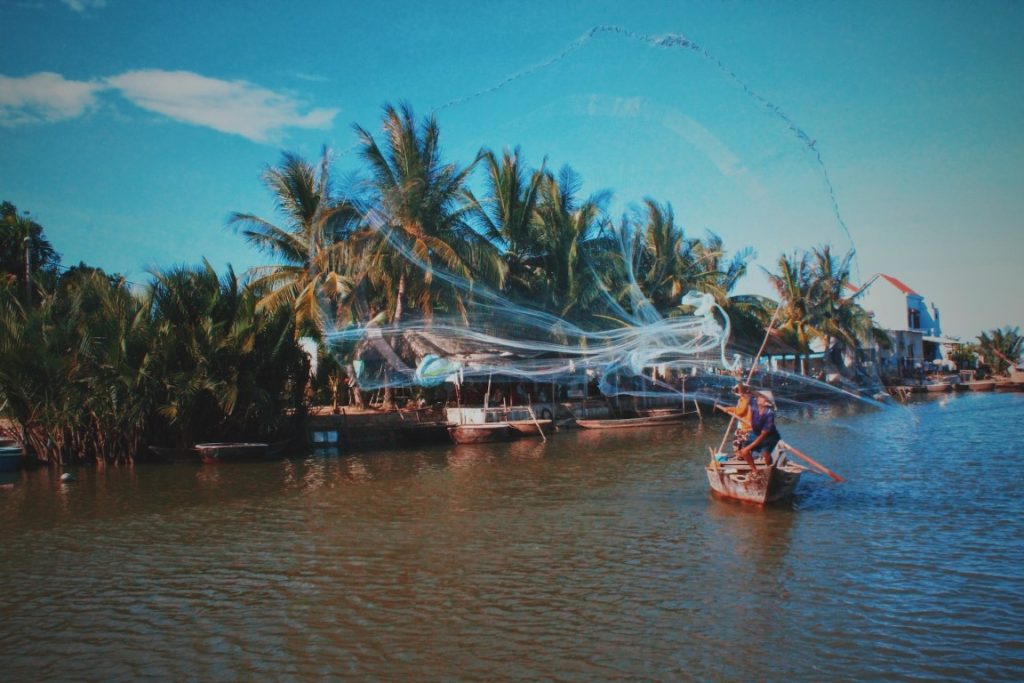
Fishing net casting is a traditional activity that offers visitors a glimpse into the local fishing practices.
- Demonstrations by Local Fishermen: Skilled fishermen demonstrate the art of casting nets, showcasing techniques passed down through generations.
- Visitor Participation and Learning Experience: Visitors can try their hand at net casting, providing an engaging and educational experience.
6.6 Cycling in Cam Thanh Village
Cycling through Cam Thanh Village is a great way to explore the surrounding area of Bay Mau Coconut Forest.
- Routes and Scenic Views: The cycling routes take visitors through scenic rice fields, offering beautiful views and a peaceful ride.
- Interaction with Local Life: This activity provides an opportunity to interact with locals and experience the rural lifestyle firsthand.
6.7 Local Cuisine and Dining
No visit to Bay Mau Coconut Forest is complete without sampling the local cuisine.
- Overview of Local Specialties: The area is known for its delicious specialties such as spring rolls, banana flower salad, and sweet and sour shrimp salad.
- Dining Options: Visitors can enjoy these dishes at local homes in the village or at the restaurant within the forest, offering a true taste of Hoi An’s culinary heritage.
7. Ecological and Cultural Significance
Bay Mau Coconut Forest plays a vital role in both ecological and cultural preservation.
- Flood Protection and Ecosystem Preservation: The forest acts as a natural barrier, protecting the area from floods and contributing to the health of the local ecosystem.
- Cultural Heritage and Community Involvement: The forest is deeply intertwined with the local culture and history, and community involvement is crucial in maintaining and promoting this unique heritage. Visiting Bay Mau Coconut Forest not only offers a memorable experience but also supports the preservation of an important ecological and cultural site.
8. Tips for Visitors
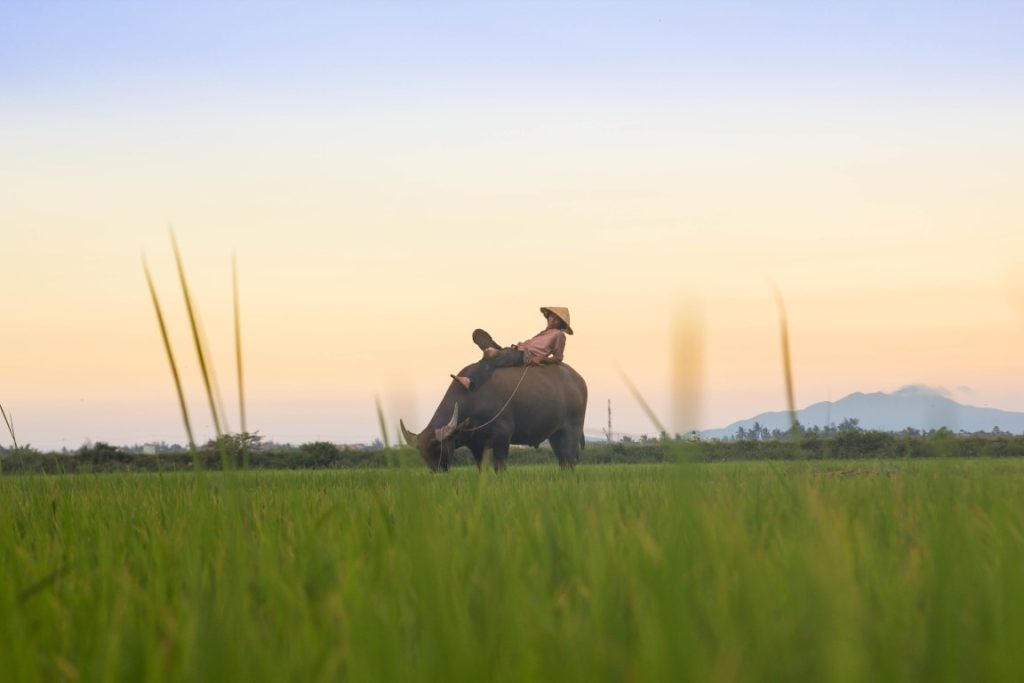
8.1. Essential Items to Bring
When planning your visit to Bay Mau Coconut Forest, it’s important to pack a few essential items to ensure a comfortable and enjoyable experience.
- Camera: Capture the stunning scenery and memorable moments with a good camera. Don't forget a waterproof cover if you plan to take photos while on the water.
- Comfortable Shoes: Wear comfortable, water-resistant shoes that are suitable for walking and boating activities.
- Snacks and Water: Bring snacks and water, especially if you plan to spend the whole day exploring. While there are dining options available, having your own supplies can be convenient and cost-effective.
- Umbrella or Raincoat: If visiting during the rainy season, pack an umbrella or raincoat to stay dry.
- Anti-Rash and Anti-Allergy Cream: Protect yourself from potential allergies or skin irritations caused by plants or insects in the forest.
8.2. Safety Precautions and Sustainable Tourism Practices
To ensure a safe and responsible visit to Bay Mau Coconut Forest, consider the following tips:
- Follow Safety Instructions: Listen to the guides and boatmen, especially when participating in activities such as boat rides and fishing net casting.
- Stay Hydrated: Drink plenty of water to stay hydrated, particularly during the hot and humid months.
- Protect the Environment: Practice sustainable tourism by not littering and respecting the natural habitat. Use the provided trash bins and avoid disturbing wildlife.
- Respect Local Culture: Show respect for the local culture and traditions by following guidelines and being courteous to the residents.
- Use Eco-Friendly Products: Opt for eco-friendly products such as reusable water bottles and bags to minimize your environmental impact.
9. Conclusion
Bay Mau Coconut Forest is a captivating destination that offers a blend of natural beauty, rich history, and cultural heritage.
From the serene basket boat rides and exciting traditional games to the fascinating local cuisine and significant ecological role, this forest provides a unique and enriching experience for all visitors.
By following these tips and practicing sustainable tourism, you can help preserve this incredible site for future generations while enjoying an unforgettable adventure in Hoi An.
Visiting the Bay Mau Coconut Forest offers a unique glimpse into Hoi An's natural beauty. To fully explore this charming city, dive into our Hoi An Travel Guide. Looking for more activities? Check out our list of Things to Do in Hoi An. These guides will help you plan an unforgettable adventure in Hoi An.






